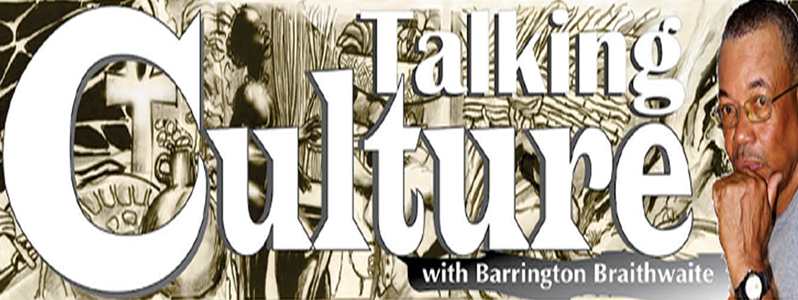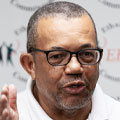– The true events of the death of Veeran Veerapen
THIS true sequence of events began with an unrelated conversation with my brother Patrick Mentore in 1999, who had given up with the Laurie Lewis GPF administration and was then working at the U.S. Embassy. I had given Patrick the copy of a researched photographic book supported by text on the impact of drugs on the Guyanese society, to see if I could attract some funding support to publish.
A colleague at UNICEF had tried with the government of the day, but they were not interested. I wasn’t successful with the Americans either, but Patrick told me his boss at the embassy was surprised. He didn’t know that “people who would do work like this existed in Guyana.” I was angry and responded to my buddy “Why’s he so contemptuous of us?” Patrick smiled and shook his head, as mystified as I was.

I had negotiated a contract with the Chronicle in 1984. Ulric Captain who conducted the negotiation was a progressive mind, and he engaged my perspective and grand ideas and the contract came to life. But by 1992-3 with the change of government, most of those lofty projections which I had begun to realise, were derailed. I had begun to understand in a way, how the Ethiopian people felt when the Italians occupied their territory. However, before that, from 1984, I was the commercial artist attached to the Advertising Department in the Chronicle. I also wrote and illustrated stories that I licensed to the Chronicle.
Editors Claudette Earle and Godfrey Wray insisted that I was too intense and should create a light, social-commentary cartoon strip. I developed ‘Times of Vincent’ and ‘Bugs’ and they were great therapy. But changes were happening worldwide that would begin a change of doing things which included the Chronicle and the printing industry across Guyana, with loss of jobs.
Computers were a new technology that were viewed back then with apprehension, distrust and as an intrusion into our normalcy. I had developed an advertising agency method of doing ads the paste-up way, methods which by 1995 had almost faded out. Veeran Veerapen was in the compo-graphic department, which had graduated to computers. ‘Pen’ – as we called Veerapen- and I developed a more solid working relationship. I would design my ads on hard copy and he would compose them on the computer, whether at home or at th- Chronicle and place it on the then state-of-the art zip disc, and we had agreed on a monthly fee.
The only interference came when he had to do the Hindu paper for then Minister and Hindu pandit, Reepu Daman Persaud. As a dedicated Hindu, this was time out. I knew his wife and children and brother-in-law who also worked at the Chronicle and I was welcome at that home. Then “Pen” told me that a printing operation was in development at Enmore Estate Village on the East Coast.
He was contracted to put the computer and software act together and this didn’t interfere with our arrangement as he would do it on the weekends. Over the weeks we would sit on his landing and discuss the peculiar characters at Enmore, humorous, but not really humorous as much of it revolved around alcohol and its input into family conflicts. I took no serious note of this new printer, even when he told me that an important foreign ‘white man’ was involved, he seemed to be one of the investors. Then on Wednesday, January 6, 1999, the Chronicle carried a story “U.S. VISA Racket busted, Three held”.
By 1999, a shroud of criminality had crept over Guyana. Extra-judicial killings, drug yards protected by police had expanded, the ‘Black Clothes’ were above the law, and this police group was mentioned in every criminal activity. We had begun to see our first drug addicts, people were eager to leave Guyana and the ‘backtrack’ was one way. The book business ‘Doctored Passports’ were common. What was not common, was when “Pen” asked me to visit his home, which I did and he quietly with his hands shaking slightly asked me if I could help him to buy a gun.
This was extremely out of character; even if he was given a gun, “Pen” would more likely have shot himself by mistake. This was not the time to pry and I suspected that even if I did, I would have been given a pre-packed scenario that was not the truth. So I promised and left. I returned two days later and lied about a promise for the gun, and he told me that it had to do with the men who were arrested at Enmore for the “backtrack” operation. They knew that he was employed at the Chronicle and assumed that he was responsible for smashing their operation. At that point, I became afraid for “Pen.” He didn’t belong to that world. I left the advertising work I had brought. I sincerely wanted to help him; I was just not sure how.
I could not have imagined that It would be the last time I would see “Pen” alive. The men were supposed to be in jail. I had, however, asked a friend through Lime Street who traversed between Georgetown and Cayenne and was steeped in unlawful stuff to see about a weapon. I knew that he was in over his head, and didn’t know anything about that life except that he was aware of danger. I returned two days later to “Pen’s” home, as usual in the afternoon. There were lots of people there, the atmosphere was pensive. His wife called me aside and explained what “Pen” had already told me; also, that the men were on the road and had visited the home, threatening them.
She also related that “Pen” had left the day before to pay his phone bill on Brickdam next to the Ministry of Education and had not returned. She said her brother was coming home from England, then she explained that they had visited the Pandit (Reepu Daman Persaud) who had informed her through a ‘read’ that “Pen” was low. They found his body the following day. I was there when the investigation team came. I knew two of them, Harold Hopkinson (Hoppy) who would explore “Pen’s” computer and would find the Hindu paper, my Advertising artwork and related stuff, nothing incriminating. The other member was Sgt Brian Cummings, my old serious sparring partner on police extra-judicial killings, and his “squaddie,” a detective named Vieira. I had promised to give them a statement the following day at CID Headquarters.
I then went to the Chronicle where I met other mutual friends, Robert, Roderick, Dan, Marcus and others. I shared with them what I knew. I saw Sharif Khan the editor, stopped him to assure him that “Pen” had not been not involved with these people, but he was adamant that “Pen” was involved and he didn’t want to hear anything else. I proceeded to Bourda Market and rode up Lime Street to tell my colleague that there was no need for him to locate the weapon “Pen” had requested, and then he bothered me about payment because of some commitment pact he had made.
I related the story of “Pen.” He then called another youth who had seen something pertaining to that incident. What he saw was frightening and at that time confusing; what he had witnessed was “Pen’s” kidnapping; “Pen” had been pulled into a car by a popular character; I couldn’t put the pieces all together, though I was previously told that this character and his confederates served a “backtrack” connection up the East Bank.
I visited Eve Leary the following day and gave a factual statement on the character of “Pen.” Brian assured me of protection if I knew anything else. I laughed, then off the record, I told Brian what I had learned. There was no way my brethren from Lime Street were going to talk to Brian. He obviously would know Brian from his days on 2775, and 9181. We looked at each other, there was nothing more to say about the incident.
I told Brian about the obvious toll his drinking was having on him; he shook his head and replied, “I can’t sleep”. Brian would not be the last victim of policemen who were made into killers, who had rationalised that they were killing hungry, low-level, law-breaking victims while being applauded by the real criminals. Brian (now deceased) would not have kept what I had told him to himself. Vieira, I was told, left the police force after he had shot himself in the foot– that took a stretch of the imagination to swallow, but who knows?
The U.S. Embassy “backtrack” matter with Thomas Carroll broke, the conversation with Mentore and “Pen’s” death, all fell into place. The idea that Veerapen had a secret life is ludicrous. “Pen” was collateral damage in a massively corrupt and callous system. The disdain and swiftness of the administration he supported let his name and character sink into the ashes and raised questions on how deep had the fangs of Thomas Carroll sunk into that administration through its rising nouveau riche support business community. “Pen’s” brother-in-Law, a pandit himself, wasted no time to take his sister, niece and nephew away from the Guyana of 1999.
I, on behalf of all who knew “Pen,” owe him this clarification in 2020. Especially with the present need to once again clarify the obvious, compromising conduct of some foreign diplomats.




.png)









